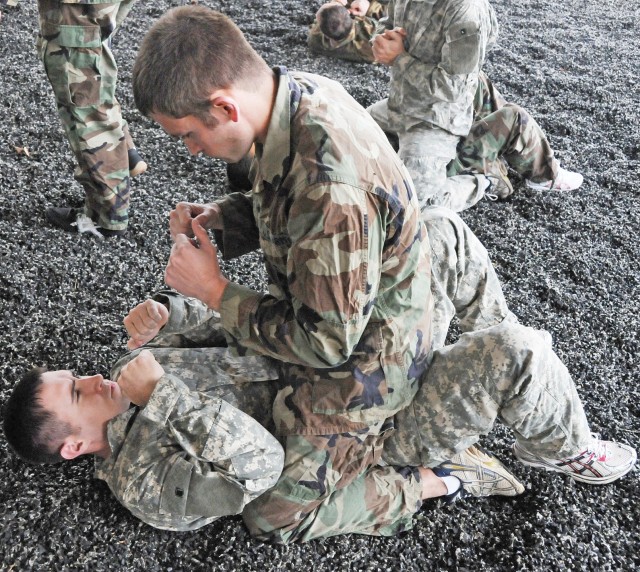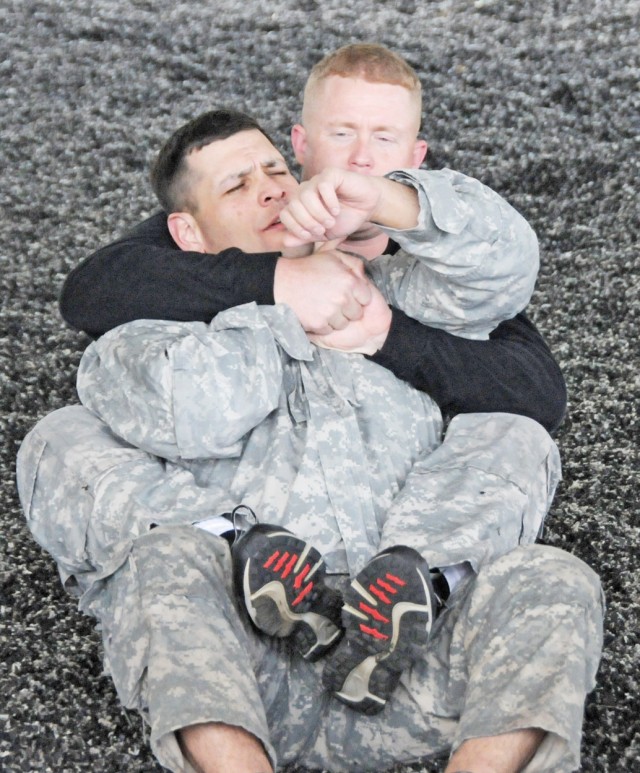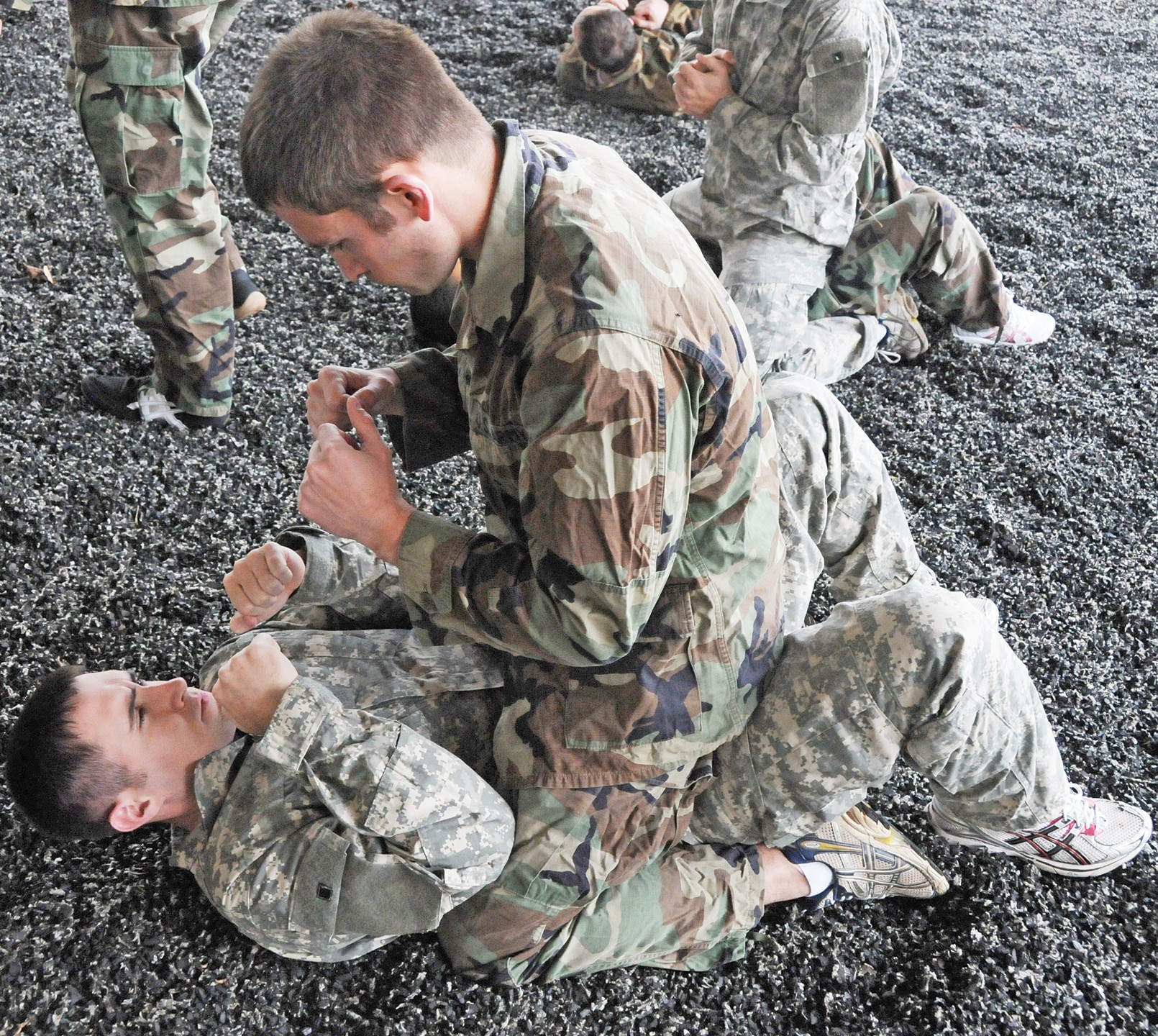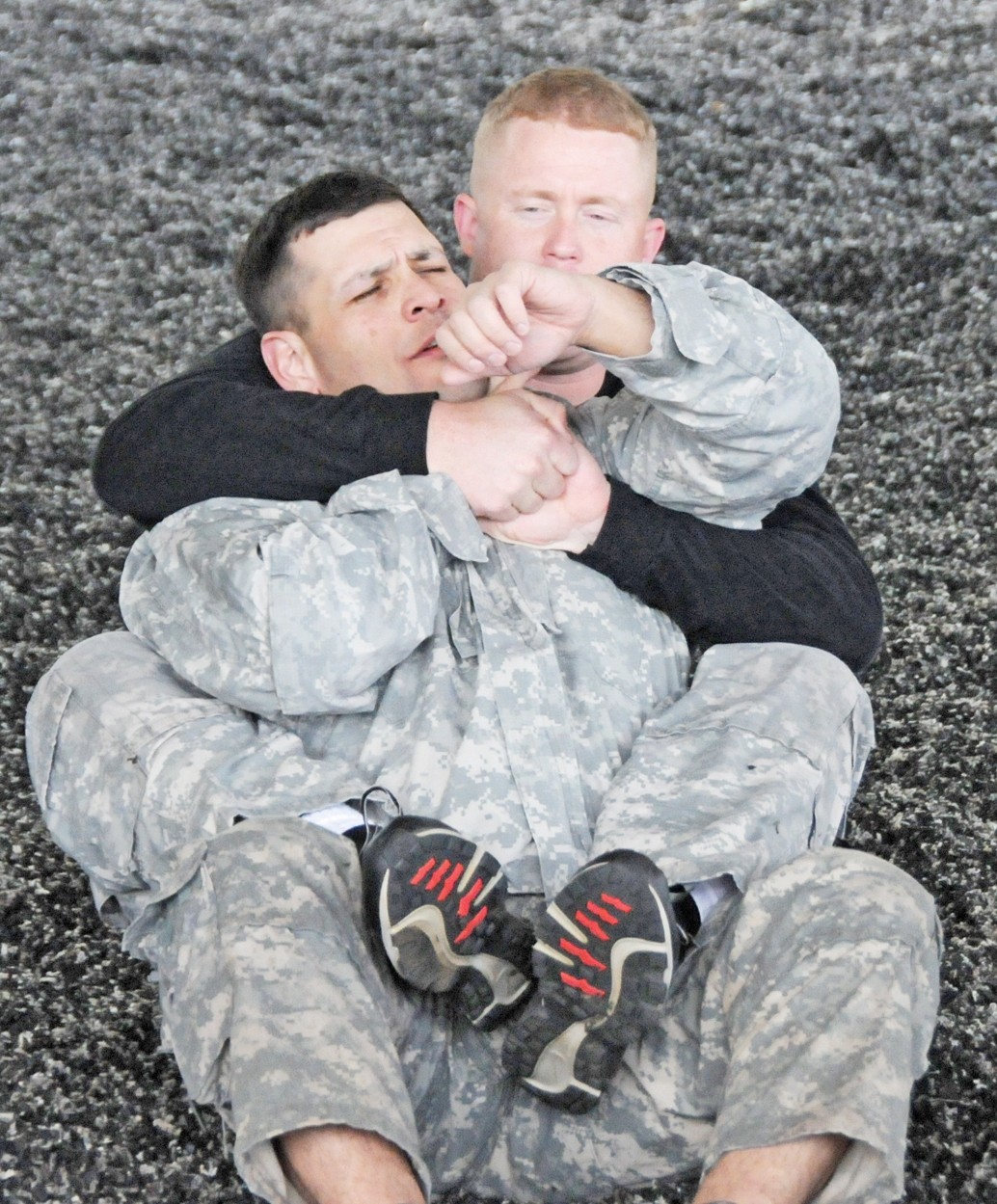FORT RUCKER, Ala. -- Pinned to the ground and trapped under an "attacker," Capt. Andrew Herzberg grabbed his opponent's wrist, cupped his enemy's elbow and raised his own right leg.
Cocking his head back in search of a good landing spot, Herzberg bowled his adversary over and gained the upper hand, inflicting the same "torment" he just endured.
Herzberg, along with other instructors, demonstrated this and other hand-to-hand combat tactics during the Modern Army Combatives Program that was recently revamped in Aviation Captains Career Course training.
Combatives originally made its debut in AVC3 about two years ago when Army regulations required it, said Maj. Ethan Dial, an A Company, 1st Battalion, 145th Aviation Regiment small group leader.
Recently, course leaders redesigned the format to better train future company commanders, Maj. John Fernandez, another small group leader, said.
In past classes, instructors taught MACP one hour each Friday, but they found themselves repeating lessons each week, Fernandez explained. Now, leaders instruct the captains about four hours a day during a one-week period in order to cover more material and further ingrain the knowledge in the students' minds.
"We changed from a one-hour class every Friday to a weeklong because it was mentioned on numerous student critique forms during the class that they might retain the instruction better if it was taught over a week, rather than piecemealing it over one-hour blocks," Dial said. "It has really been successful."
According to Army regulations, MACP's objective is "to enhance combat readiness by instilling the confidence and fighting skills that are only gained through engagement with an opponent in a combat situation," noting Soldiers "must be willing and able to fight when called upon."
The changing face of modern warfighting led to the inclusion of combatives, the regulations also cite.
"The dynamics of a full spectrum combat environment demands that Soldiers have the courage, confidence and competence to implement controlled aggression to use the minimum amount of force to control the situation. It also improves Soldiers' ability to remain focused under duress," the regulations note.
Captains undergoing the training echoed those sentiments.
"There is no front line," said Capt. Beccah Martiazzi, a UH-60 Black Hawk pilot, adding that the lessons learned during training could be useful in a deployment mission like troop transport. "What happens if you break down in a (landing zone)'"
Army regulations also state MACP training improves confidence and a unit's esprit de corps, which is something Capt. Rob Massey sees.
"It gives people confidence in their abilities, the toughness (and belief) you can win," he said, noting the tactics are designed to allow people at size disadvantages to defeat larger opponents. "Everyone should (complete it), no matter what branch you're in. It's a confidence-building event."
Martiazzi also saw one more benefit as she continues her career as a leader.
"We need to make sure our Soldiers know this. If (we) as leaders can't teach it, then it's hard to enforce that," she said.




Social Sharing